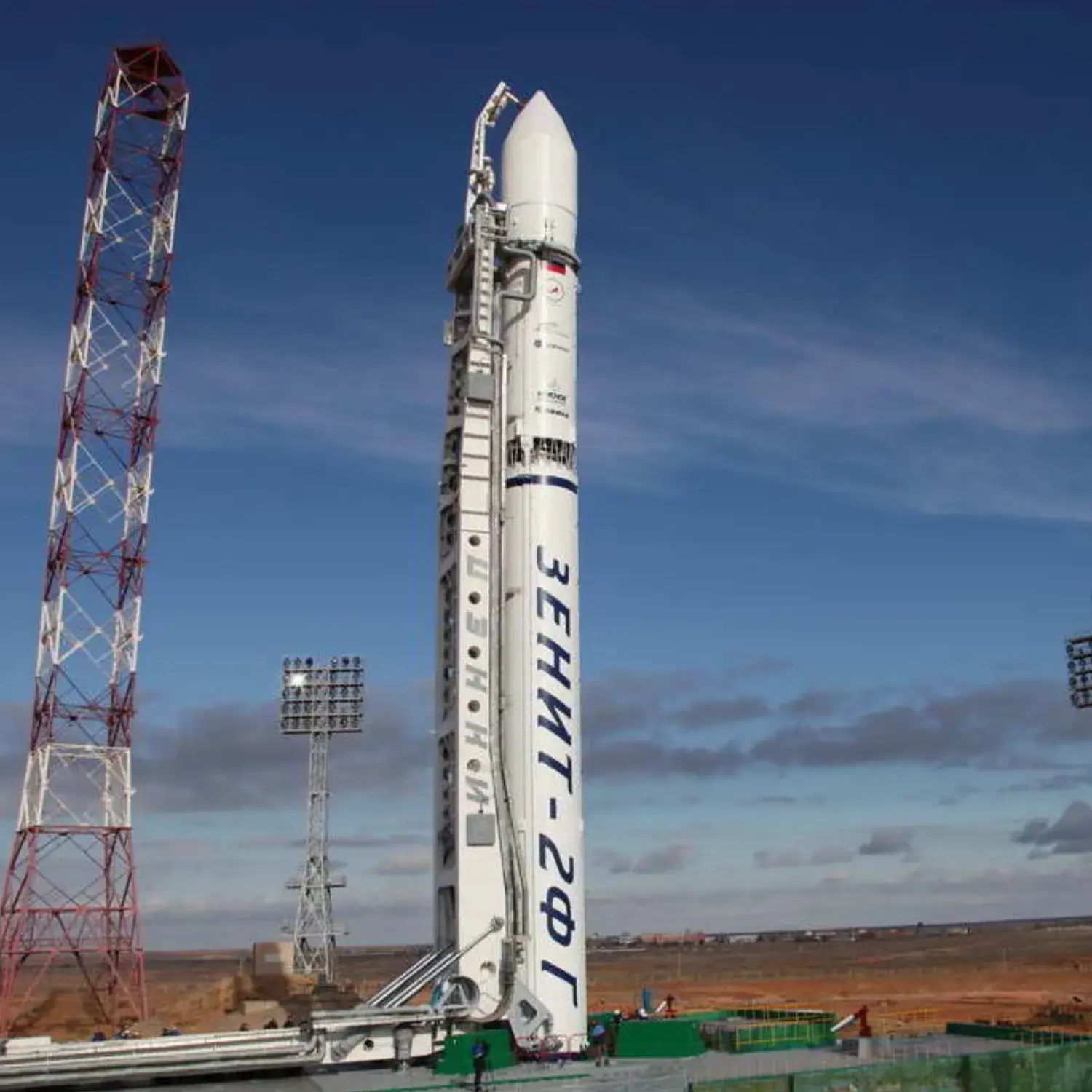Fobos-Grunt & Yinghuo 1
Launch Success
Liftoff Time (GMT)
20:16:03
Tuesday November 8, 2011
Mission Details
Launch Notes
First Russian Mars mission (the other ones were Soviets). First Chinese interplanetary probe. First and last flight of Zenit-2 FG.
Fobos-Grunt
The Russian Fobos-Grunt mission's objectives were to collect soil samples from Phobos, a satellite of Mars and to bring the samples back to Earth for comprehensive scientific research into Phobos, Mars and Martian space. The space mission component development was led by the company NPO Lavochkin. Phobos soil sampling and downloading had been assigned to the GEOHI RAN Institute of the Russian Academy of Science (Vernadski Institute of Geochemistry and Analytical chemistry) and the integrated scientific studies of Phobos and Mars by remote and contact methods were developed by the IKI RAN Institute (Space Research Institute). The return stage was mounted on top of the lander. It would have needed to accelerate to 35 km/h to escape Phobos' gravity. In order to avoid harming the experiments remaining at the lander, the return stage would have ignited its engine once the vehicle had been vaulted to a safe height by springs. It would then have begun maneuvers for the eventual trip to Earth, where it would have arrived in August 2014. An 11-kg descent vehicle containing the capsule with soil samples (up to 0,2 kg) would have been released on direct approach to Earth at 12 km/s. Following the aerodynamic braking to 30 m/s the conical-shaped descent vehicle would perform a hard landing without a parachute within the Sary Shagan test range in Kazakhstan.
Low Earth Orbit
1 Payload
13,390 kilograms
Yinghuo 1
Yinghuo-1 (Chinese: 萤火一号) was a Chinese Mars-exploration space probe, intended to be the first Chinese planetary space probe and the first Chinese spacecraft to orbit Mars. It was launched with the Russian Fobos-Grunt sample return spacecraft, which was intended to visit Mars' moon Phobos. The 115 kg Yinghuo-1 probe was intended by the CNSA to orbit Mars for about two years, studying the planet's surface, atmosphere, ionosphere and magnetic field. Shortly after launch, Fobos-Grunt was expected to perform two burns to depart Earth orbit bound for Mars. However, these burns did not take place, leaving both probes stranded in orbit. On 17 November 2011, Chinese state media reported that Yinghuo-1 had been declared lost by the CNSA. After a period of orbital decay, Yinghuo-1 and Fobos-Grunt underwent destructive re-entry on 15 January 2012, finally disintegrating over the Pacific Ocean. The information concerning the Yinghuo 1 mission was rather patchy. The payload consisted of five instruments: - a "plasma kit," including a mass spectrometer and proton and electron analyzers; - a fluxgate magnetometer; - a radio occultation experiment to probe the atmosphere; - two cameras with a field of view of 20 and 38°, allowing photos to be taken with a resolution of up to 200 m on the ground under optimal conditions.
Low Earth Orbit
1 Payload
115 kilograms
Rocket


Manufacturer
YuzhmashRocket
Height: 57m
Payload to Orbit
LEO: 13,740 kg
GTO: 4,500 kg
Liftoff Thrust
7,257 Kilonewtons
Fairing
Diameter: 3.9m
Height: 13.65m
Stages
2
Launch Site
Stats
Zenit
76th
Mission
5th
Mission of 2011
2011
68th
Orbital launch attempt